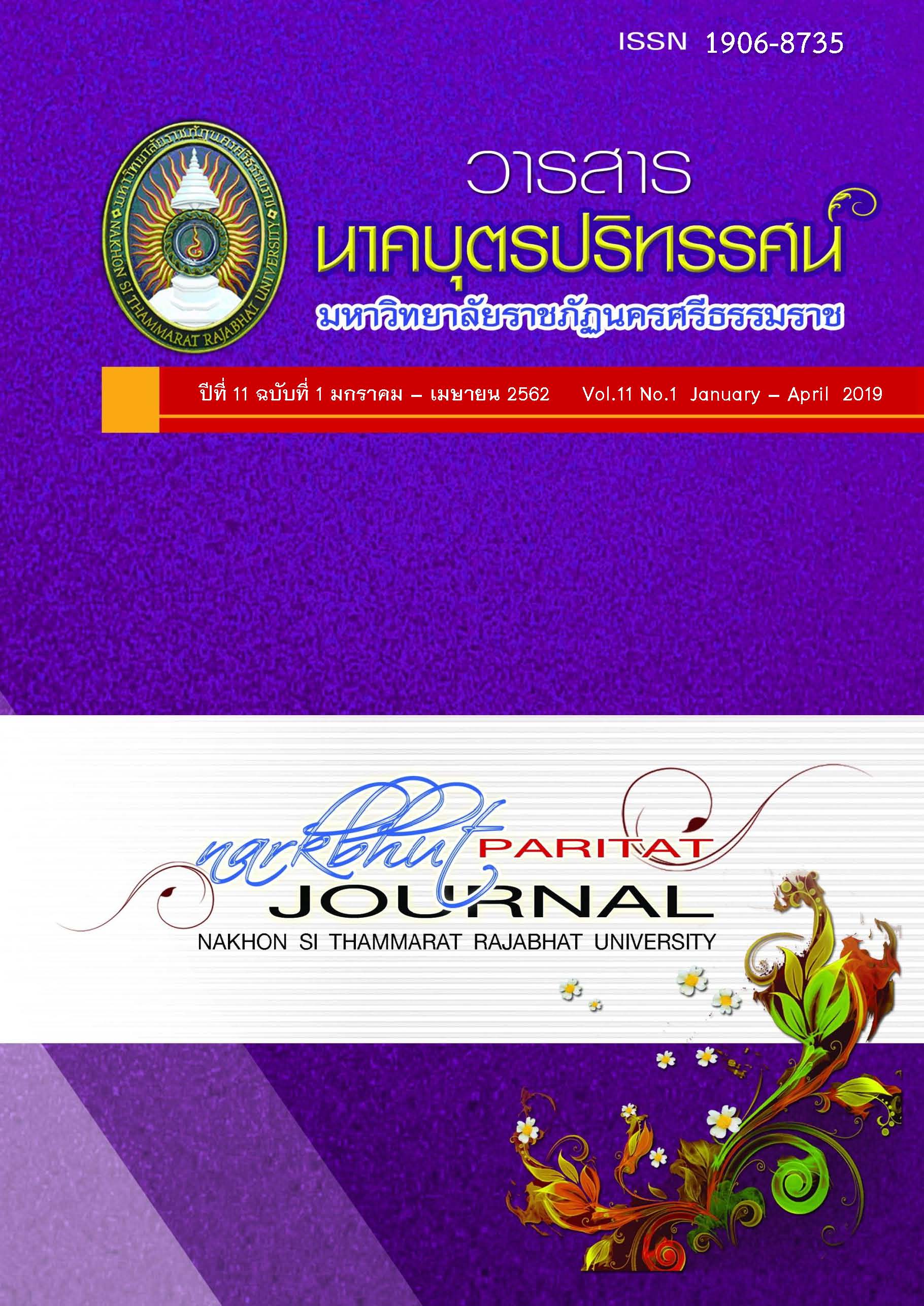A Model of a Learning Organization within a World-Class Standard School in the Secondary Educational Service Area 12
Main Article Content
Abstract
The purposes of this research were: 1) to study the current state of a learning organization within a world-class standard school in the secondary educational service area 12; 2) to construct a model of a learning organization within a world-class standard school in the secondary educational service area 12 ; and 3) to assess a model of a learning organization within a world-class standard school in the secondary educational service area 12. The research approach was the mixed methods, and comprised of three phases: 1) Studying the current situations of a learning organization within a world-class standard school based on an investigation of documents, concepts, theories and a review of relevant research studies and an interview of 53 administrators within the secondary educational service area 12 ; 2) Constructing a model based on an investigation of documents, concepts, theories and a review of relevant research studies in conjunction with the data in phase 1; and 3) Assessing and verifying a model by a connoisseurship amongst 9 educational experts and a focus group discussion amongst 5 administrators from the world-class standard school within the secondary educational service area 12. A 5 rating-scale questionnaire was used for data collection. The data were analyzed for frequency, percentage, mean, standard deviation and content analysis.
The findings of the study were as follows:
- As a whole, the current states of a learning organization of world-class standard school within the secondary educational service area 12, were at a high level. When each factor was considered, from the highest to the lowest, it was found that shared vision which was the highest, followed by organization transformation, team learning, personal mastery and creative production which was the lowest.
- A model of a learning organization within a world-class standard school in the secondary educational service area 12 consisted of 5 factors: 1) shared vision; 2) organization transformation; 3) team learning 4) personal mastery; and creative production.
3. For assessing and verifying a model of a learning organization within a world-class standard school in the secondary educational service area 12, it showed that the model was accurate, appropriate, feasible and utilizable.
Article Details
References
Secondary Education Service Area in Bangkok. SDU Research Journal Humanities and Scocial Sciences. 9 (3).
Chiyaset Phomsri. (2008). A Handbook for Excellent Organizations. Bangkok: Punyachon.
Garvin, D. (1993). Building a Learning Organization. Harvard Business Review, 71.
Hoy, W. K. & Miskel, C. G. (2001). Educational Administration: Theory, Research
and Practice.6th ed. New York: Mc Graw–Hill International Edition 2001.
Marquardt, M. J. (1996). Building the Learning Organization: A Systems Approach to
Quantum Improvement and Global Success. NY: McGraw-Hill.
Parichat Kunpluem (2005). Developing Learning Organization Models of Private
Universities in Thailand. Doctor of Education Program in Educational Administration, Graduate School, Burapha University.
Payom Chinnawong (2012). Learning Organization Model of Schools for the Deaf in
Thailand. Doctor of Education Program in Educational Administration, Graduate School, Silpakorn University.
Pedler, B., Burgoyne, J., & Boydell, T. (1991). The Learning Company, A Strategy for
Sustainable Development. London: McGraw-Hill.
Saksin Chongdarakul. (2007). Factors Related to the Sufficiency Economy Philosophy
Application. Academic Journal, The Office of the Basic Education Commission. 10(4), 49-56.
Saman Utsawapum. (2014). An Educational Reformation of School Administration in
New Era (Revised Edition). Ubon Ratchathani : Ubonkit Offset Printing Ltd.
Senge, P. M. (1990). The Fifth Disciplines: The Art and Practice of Learning
Organization. London: Century Business.
Somchai Rattanakoch. Phongsri Vanitsuppavong , Ekkarin Sungtong, and Chawalit Kerdtip
(2015, September-December). Development of Learning Organization of Prince of Songkla University. Academic Services Journal Prince of Songkla University. 26(3).
The National Economic and Social Development Board (2016). The Twelfth National
Economic and Social Development Plan (2017-2020). Bangkok: The National Economic and Social Development Board.
The Secondary Education Office (2016). Office of the Basic Education
Commission Quality Award: OBECQA (2016-2017). Bangkok: The Agricultural Co-operative Federation of Thailand.,LTD.
Wasun Saenglha (2014, May-August). Developing Learning Organization Model for Small
Primary Schools in Chaiyaphum Province. Pathumthani University Academic Journal, 6(2).
Weerawat Punnitamai. (2001). Learning Organization Development. Bangkok:
Teerapomwannakam.
Weerawut Makasiranon. (2002). Learning Organization Development. Bangkok: Thunkamol
Press.
Weerawut Makasiranon. (2006). Learning Organization to Intelligent Organization. 5th ed.
Bangkok: Expernet.
Wichit Saengsawang. (2012). A Learning Organization Model Development for Rajabhat
Universities Using LISREL Analysis. Doctor of Education Program in Educational
Administration, Dhurakij Pundit University.
Wijarn Panich (2007). Intelligent Organization. Industrial Relations Journal, 73, 2 - 3.
Wirot Sarrattana. (2002). Educational Administration ,Theory and Principle. Bangkok:
Thipwisut.
Worapong Taochalee (2014, May-August).The Efficiency of School Administration Related
to the World Class Standard School of Secondary Schools in the Northeastern Region. Veridian E-Journal, Silpakorn University. 7(2).


